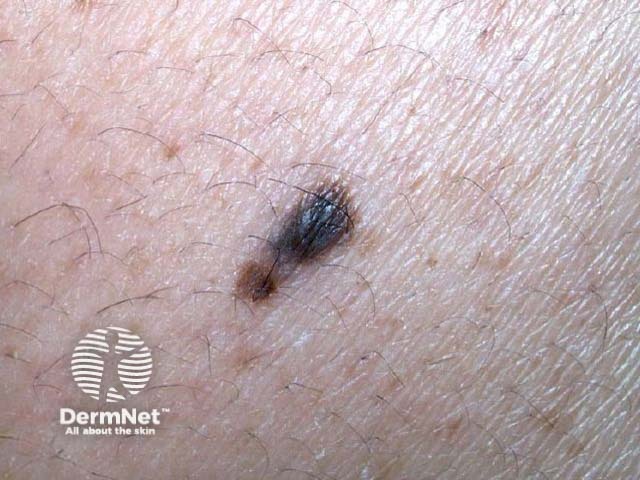Main menu
Common skin conditions

NEWS
Join DermNet PRO
Read more
Quick links
Blue skin lesions may be due to melanocytic lesions, vascular lesions or exogenous pigment. Dermoscopy may be useful to distinguish them.
Melanin is normally a brown colour. Melanocytic lesions tend to be blue in colour if the melanin is located within the dermis. They may be congenital (e.g., mongolian spot) or acquired.
For each of the seven cases, study the image(s) and then answer the questions. You can click on the image to view a larger version if required.
Each case should take approximately 2 minutes to complete. There is a list of suggested further reading material at the end of the quiz.


Name this blue-coloured skin lesion.
Invasive melanoma
Describe the dermoscopic features
Malignant melanoma may resemble blue naevus but tends to be more irregular and odd-looking. Blue colour within melanoma indicates it is an invasive tumour, as there are malignant cells within the dermis.
The three-point checklist for dermoscopy looks for asymmetry of structure, atypical network, and blue-white structures. In this case with all three points, there is a prominent blue-grey veil, i.e., irregular confluent blue pigment with a ground glass haze. It is due to hyperkeratinisation over dense epidermal pigment.